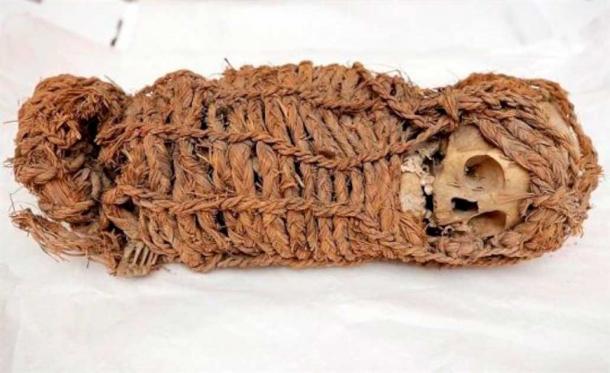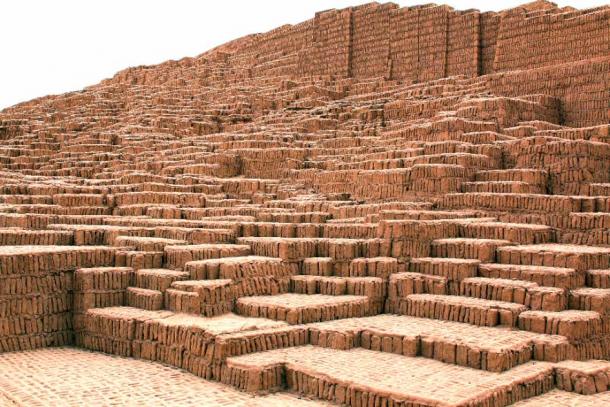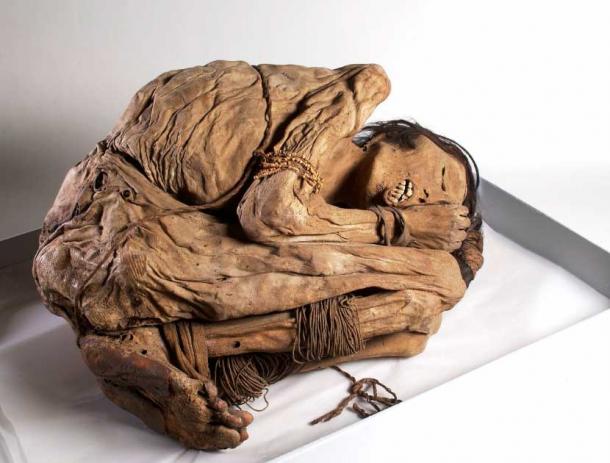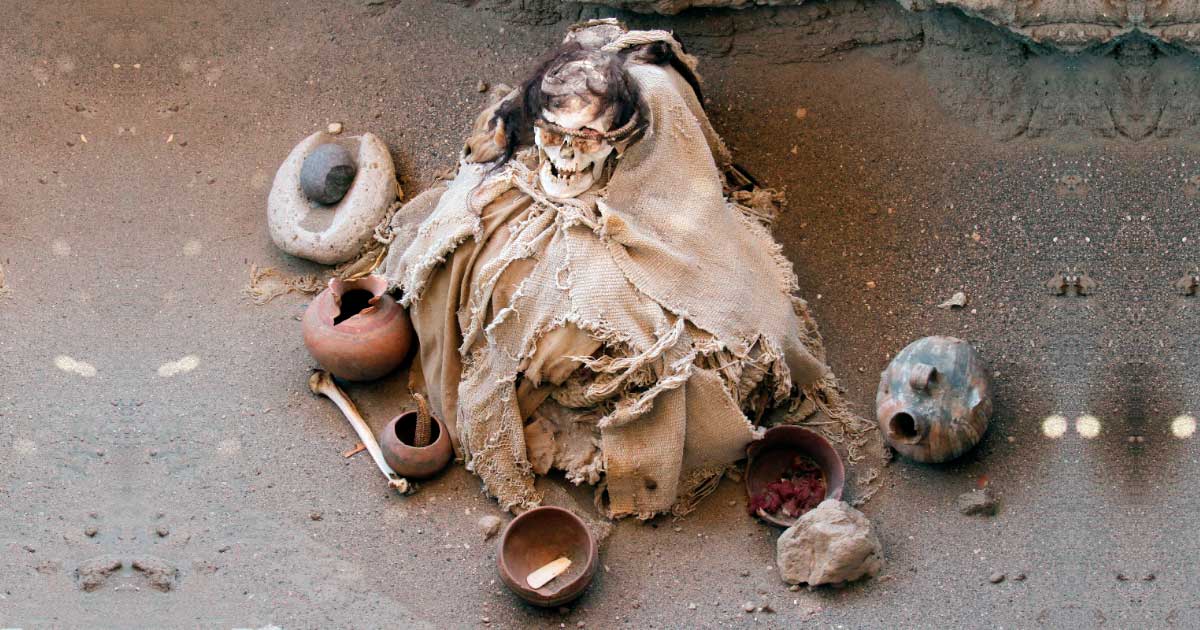Archaeologists in Peru Unearth Eight Colonial Era Skeletons
Archaeologists in Peru have unearthed the bodily remains of three children and five adults. This adds to bodies discovered at this site in August, the researchers suspect they've identified a rare colonial-era cemetery.
Earlier this year, we covered a story about a team of archaeologists who discovered forty-two syphilis-ridden colonial Spaniards at a 500-year-old religious hospital in Lima, the capital city of Peru. It was thought that the lost mummified bodies of the three last rulers of the Inca Empire were also hidden somewhere at this 15th century site.
Now, three “child mummies” have been unearthed at another colonial period site in the country's capital, indicating the presence of a lost colonial-period cemetery.

A 2,000-year-old child mummy was repatriated to Peru from the USA in 2019 (EFE / Ministry of Culture of Peru)
Ancient Coastal Peru before the Conquistadors
Situated in the desert on a coastal strip of present-day Peru in the Chillon, Rimac and Lurin River valleys, Lima was founded by Spanish conquistador Francisco Pizarro on January 18, 1535 AD, only three years after the first wave of conquistadors arrived. The city became the capital of the Viceroyalty of Peru and site of a Real Audiencia in 1543 AD.
However, long before the Christian invaders arrived in 1532, the pre-Incan Lima culture and Ychsma people lived in the region during the Early Intermediate Period (100 to 650 AD). Lima’s Park of Legends features five ancient huacas (sacred sites) dating back 2,000 years. All of these sites, temples, plazas, and stone enclosures are located within the 'Maranga archaeological complex'.
Now, archaeologist Lucenida Carrion has announced the discovery of “eight colonial-era individuals”, which add to the previous skeletons unearthed at this site in August. Moreover, three of the eight recently discovered bodies were children.
- Chancay Burial Dolls: Ancient Peruvian Grave Goods of a Lost Culture
- Ancient Mysteries Unveiled at the Temple of Fire (Peru)

The Huaca Pucllana in Lima, Peru, a sacred site of the pre-colonial Lima culture (Alexmillos / Adobe Stock)
Conversion at the Point Of a Sword
One of the three skeletons discovered in August this year was gripping a wooden cross in their hand. The cross suggests the archaeological site was “probably not” an indigenous burial ground and that it “most probably” dated to the colonial period, which lasted from 1534 to 1820.
The nature of the burial site, whether indigenous or colonial, was left open, even after the August discovery of the cross, because when the Spanish conquered and colonized the Andes, they forced mass-conversion of indigenous peoples to Catholicism, often at the tips of their swords. It is possible that the person holding the cross was indigenous, although recent discoveries have proven the site dates to the colonial period.
Spanish Clothes and “Unusual” Burial Positions Gave the Game Away
Manuel Moron is field manager at the Park of Legends, and he said the eight mummies were buried amid textiles with patterns that are most often associated with Spanish colonials. Lucenida Carrion said the discovery of these eight bodies and the grave goods “backs our hypothesis that this could be a cemetery from the colonial period.”
Further supporting the colonial dating, the eight bodies were found in “unusual positions.” To make sense of their positioning, we can refer to an article published this week in The New York Times. This September, archaeologists discovered the remains of twenty one people, eight of them children, who lived 600 to 800 years ago in Lima. Archaeologist Cecilia Camargo said these bodies had been “buried in a classic pre-Columbian style in Peru: their bodies bound in a sitting fetal position and bundled in layers of textiles, surrounded by ceramic vessels, plates, pots and figurines.”
- Scientists Set to Unravel Secrets of Oldest Peruvian Mummies Ever Found
- Peruvian Mummy Taken to Children’s Hospital for Revealing X-rays

A naturally preserved Peruvian mummified male, circa 1200-1400 AD, possibly from the northern coast of Peru where the Chimu culture buried their dead in 'mummy bundles', curled up in fetal position with bound hands and feet. (Wellcome Collection / CC BY 4.0)
The eight recently discovered bodies were “unusual” in that they were not laid in fetal positions, but laid east to west following Christian burial conventions. This is because 16th century Catholics believed when the second coming of Christ occurred he would come from the east, like the sun. This meant Christian corpses were laid on their backs and oriented with their heads in the west, so that on the prophesied return of the messiah they would rise and meet their Christ face-to-face.
Top Image: A mummified individual discovered in Chauchilla, Nazca, Peru, with traditional pre-Columbian burial dress and goods. One of the recently discovered mummies was holding a cross, supporting an estimated date in the colonial period. Source: Gerardo Daniel / Adobe Stock
By Ashley Cowie
References
Cowie, A. May 31, 2022. Syphilis-ridden Spanish Skeletons Found at Lima’s First Hospital. Ancient Origins. Available at: https://www.ancient-origins.net/news-history-archaeology/limas-first-hospital-0016836
The Park of Legends in Lima. n.d. MachuPiccuTerra. Available at: https://www.machupicchuterra.com/lima/lima-city/park-legends-lima
Pérez-Balarezo, A., Uceda, S., Boëda, E., Silva, E., Sotelo, L., Romero, R., Ramos, M. & Babot, P. October 2020. Cobbles, tools, and plants: Techno-functional variability within lithic industries of complex societies in Central Coast, Peru (~1800–400 BP). Journal of Archaeological Science: Reports. 34. Available at: https://www.researchgate.net/figure/Location-of-the-Archaeological-Complex-Maranga-MAC-in-the-lower-part-of-the-Rimac_fig2_344622743
Archaeologists unearth Colonial-era Mummies in Peru. October 14, 2022. Reuters. Available at: https://sg.news.yahoo.com/archaeologists-unearth-colonial-era-mummies-065209176.html
Taj, M. October 11, 2022. ‘3,000 Years of History Are Literally Just Beneath Our Feet’. New York Times. Available at: https://www.nytimes.com/2022/10/11/science/lima-peru-archaeology.html
Why are people traditionally buried facing east? December 31, 2011. Christianity StackExchange. Available at: https://christianity.stackexchange.com/questions/5160/why-are-people-traditionally-buried-facing-east




















Comments
Almost TOO MUCH effort in this article to convince us of the era/dating. Let’s wait for the DNA analysis.
Nobody gets paid to tell the truth.